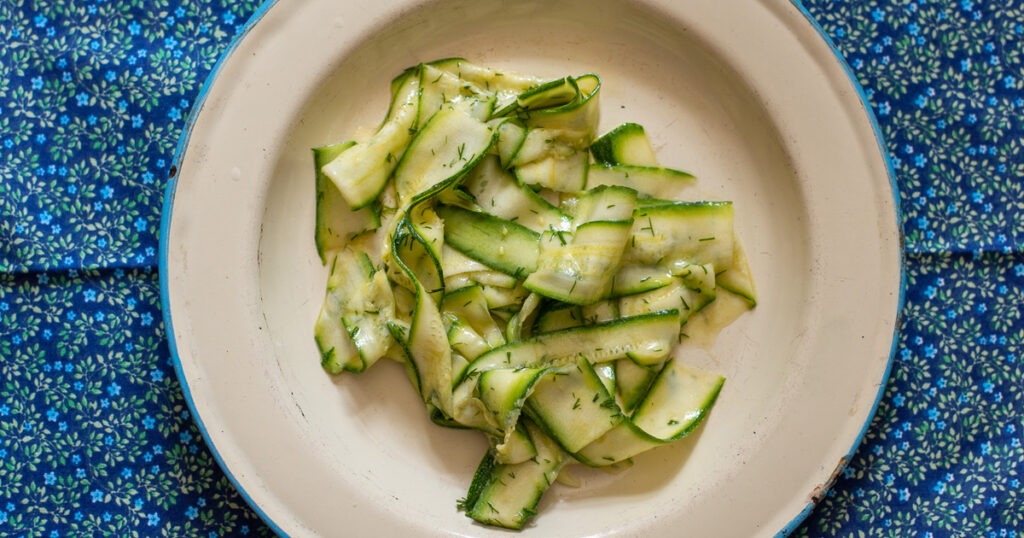With this spring set to be the driest on record, small tweaks to how we care for our gardens can make a big difference
If you’ve found this spring’s weather a challenge then you’re not alone! When we take a look around our garden we see that some plants are loving the hot, dry conditions but others… not so much. At Railway Gardens it is a constant battle to keep our young plants and anything in containers to keep from drying out or crisping in the heat. This weather is particularly tough on urban gardeners, who are often growing in containers and likely to have less shade, and new growers who have enough to wrap their heads around without having an extra challenge!
Luckily, there are things we can do to help our gardens adapt. Today we’re sharing four gardening strategies for a changing climate that we couldn’t live without.
1. Practice good watering habits
When we think about water in our gardens, it’s helpful to always be asking how we can slow, spread, and sink water, Or to put it another way…
- How we prevent water escaping from the garden before our plants have had a chance to use it?
- How can we get water to all the areas of our garden where it’s needed?
- How can we store water in the soil?
Longer term we can make our gardens more climate resilient by installing water butts, planting deep rooted perennials, creating ponds, building healthy soil, and other strategies. But how about right now, when are plants are struggling? Watering efficiently is key!
- Prioritise what needs water most. In general this is going to be direct sown seeds and young seedlings, thirsty plants (like cucumbers and tomatoes), anything in a pot, and anything that’s flowering or fruiting.
- It’s also helpful to notice each plant’s own signals that it’s thirsty; if you see drooping leaves (that don’t perk up in the cooler evening’ or crispy leaf tips, it’s time to water.
- If possible, water in the early morning or later evening when it’s cool, so that less water is lost to evaporation.
- Always water the soil at the base of the plant, not the leaves.
- Apart from the thirstier plants mentioned above, in general a couple of good soaks each week is more helpful to the plants than a lighter daily sprinkle. Really soak that soil!
- Sit pots or trays of seedlings in trays of water – just remember to take them out again when the soil is wet through so the plants don’t sulk about having waterlogged roots.
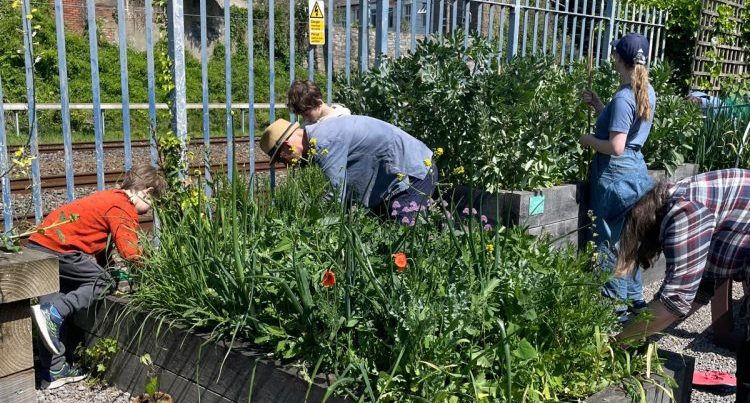
2. Mulch, mulch, mulch!
Mulching simply means covering the surface of the soil to help it hold on to water by preventing evaporation. Mulching can also feed the soil too. Types of possible mulch include straw, rabbit/ guinea pig bedding, grass clippings, wood chip, compost, well rotted manure, cardboard, hessian, sheep’s fleece, weeds and plant cuttings (for example nettles or comfrey). There are a few things we should bear in mind when mulching:
- Wood chip should be small chips and partially rotted down
- Chicken or horse manure should also be well rotted
- Only use grass clippings that aren’t full of weed seeds (don’t use hay)
- Take sellotape off of cardboard
- Mulching with straw can attract slugs. It’s fine to use on strong established plants but don’t mulch with straw around tiny seedlings.
You can mulch plants in the ground, in raised beds, in pots, and even in hanging baskets – water first, layer it on thick, then check in a couple of days. Push your finger into the soil below the mulch; it’s amazing how damp it stays compared to unmulched areas.
- If you can, water in the cooler early morning or later evening to reduce water loss from evaporation
- Know which plants to prioritise. Look for visual cues from your plants, such as slightly drooping leaves, or focus on seedling, thirsty plants like tomatoes and courgettes, anything in a pot, and plants that are currently flowering or fruiting.
- Water the soil, not the plant: aim low down and at the base of plant, near the roots.
- It’s preferable to give established plants a couple of big soaks a week – don’t just wet the surface. Direct sown seeds and new seedlings might need a daily sprinkle.
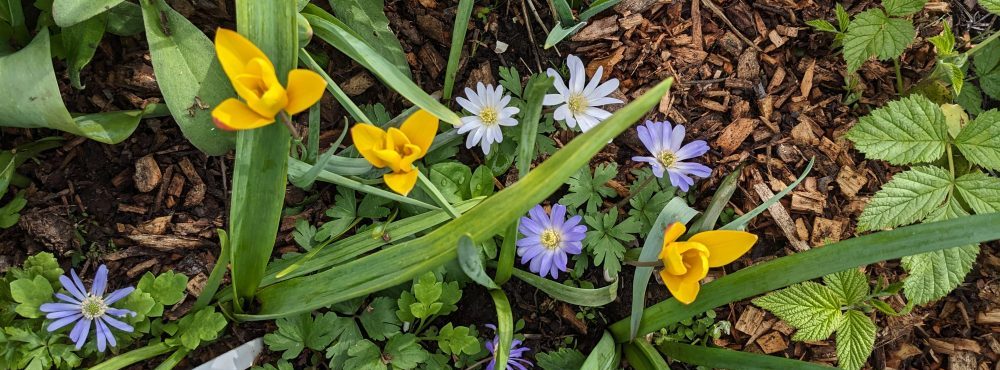
3. Look for shade
Shade is often seen as a garden problem, but as the weather gets hotter and drier it can become essential. Many salads and herbs will either shrivel up or bolt (go to seed) very quickly in full sun, and seeds direct sown in a sunny spot will need constant vigilance to keep the soil moist enough for them to germinate.
Is there a shady spot in your garden you could make use of? Maybe a neighbour’s tree, a large shrub, or a climbing frame? If you’ve got plants in moveable containers you could consider moving them into this shade. If you’re going to be sowing seeds, are there any plants growing right now, like beans, sunflowers, or sweetcorn that could shade them as they grow? Try planting lettuces, salad leaves, herbs, and radishes in between taller plants for sun protection.
Or if your plants can’t be re-located, consider rigging up some shade using purpose bought shade netting or something like an old net curtain.
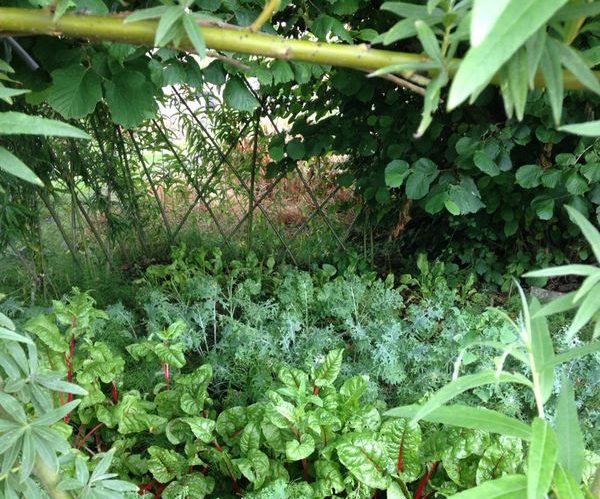
4. Lend a helping hand to wildlife
Helping wildlife is obviously the right thing to do for its own sake, but working in partnership with wild creatures can also help our gardens thrive. Where bird and mammal numbers are lower, pests can thrive and ruin our garden plans, and where pollinator numbers are lower we’ll struggle to make our tomatoes, cucumbers, fruit bushes and everything else that requires pollination to be productive.
A clean water source, refreshed daily, could be a lifesaver for wild creatures when there’s so little rain. Make sure you use something shallow, and put in some flat pebble so birds and insects can use it safely, without any risk of drowning. Water is key, but there are a few other things we can do for wildlife at this time of year too:
- Don’t cut back trees or bushes; leave them until after August to avoid disturbing nesting birds.
- Got caterpillars on your veg? Consider leaving a few ‘sacrificial’ plants to be munched so that nesting birds can make use of the juicy, juicy caterpillars to feed their young.
- For the same reason, avoid the temptation to use pesticides in the garden, as this adds yet another challenge to wild creatures looking for food.
- Pop out an orange slice or a squidgy banana for butterflies
- Mulch your garden to encourage worms closer to the surface; the birds will thank you!
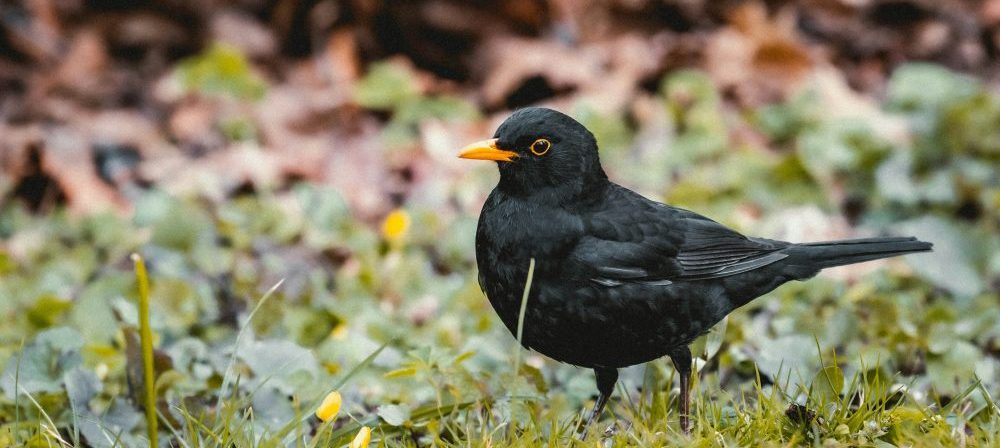
We hope these tips will help your garden thrive this summer. And if you want to get some hands on gardening experience, why not join the friendly volunteer team at Railway Gardens? Find out more here.



